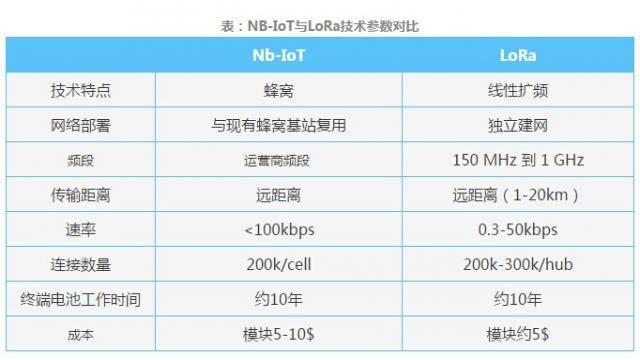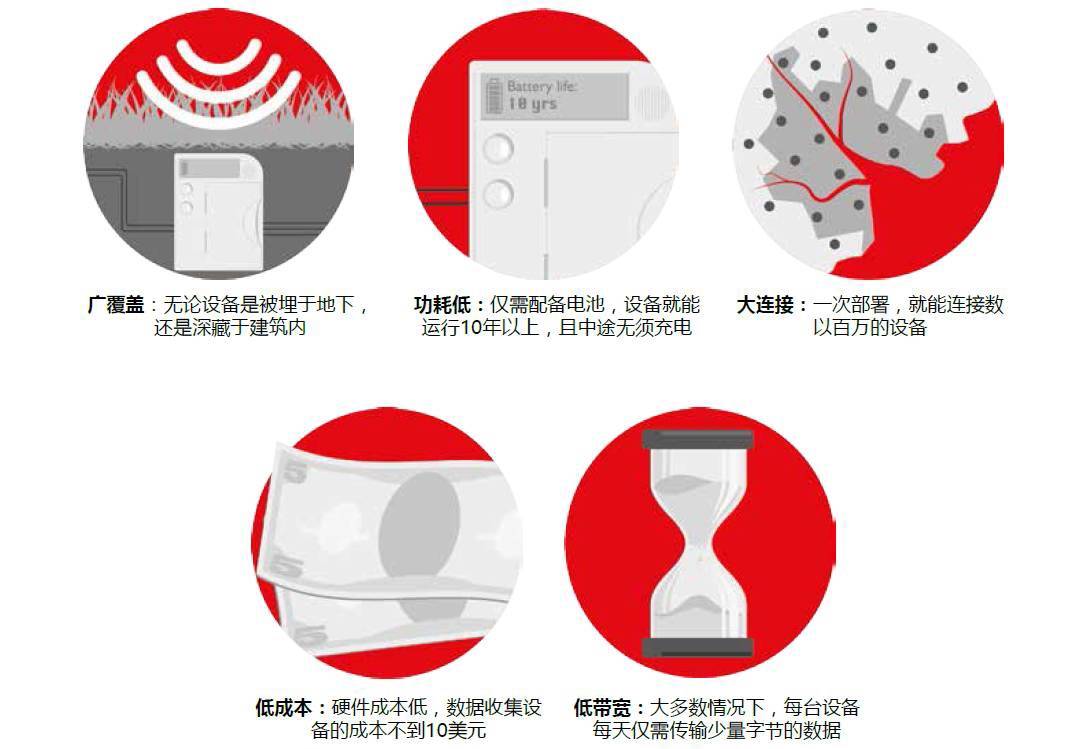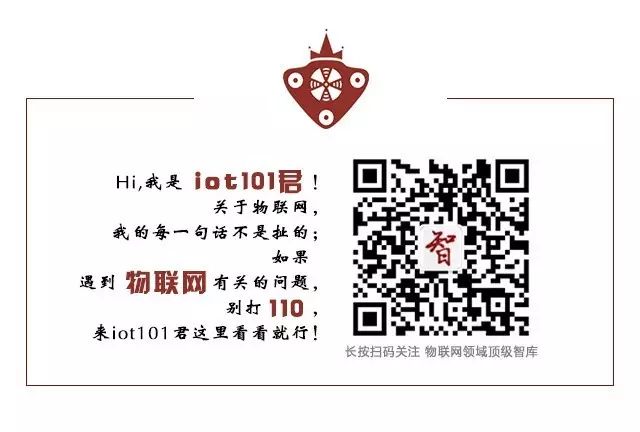
Author: Sophia
IoT Think Tank Original
Please indicate the source and origin when reprinting
—— [Introduction] ——
The popularity of NB-IoT has, in a sense, played an educational role in the market, allowing people to gain further understanding of other LPWAN technologies, including LoRa, and even accelerating the commercialization of technologies like LoRa to some extent.

If trash bins can be interconnected, they can notify relevant departments to empty them in a timely manner when they are about to be full; if water meters can be connected to the internet, they can remotely record users’ water consumption while monitoring for leaks and other anomalies; if smart sensors can be installed in parking spaces, drivers can quickly find parking spots and avoid overtime… When thousands of similar “things” are connected into a massive “Internet of Things,” new applications continuously emerge, bringing revolutionary changes to our lives and work.
However, traditional IoT connection solutions are often overkill for many use cases; a manhole cover or a water meter does not need to send large amounts of data daily. What they need is low-cost, low-power, and highly reliable IoT connections. This is the main reason why low-power wide-area networks (LPWAN) have flourished in recent years.
NB-IoT is thriving, while LoRa quietly profits!
The two most important technologies in the LPWAN field are NB-IoT and LoRa.

Image: Comparison of NB-IoT and LoRa
Among them, NB-IoT, due to its strong pedigree (international standards set by 3GPP), choice of authorized spectrum, and the active promotion by mainstream operators and device manufacturers, has the technical and industrial foundation to deploy a nationwide wide coverage network.

Image: Characteristics of NB-IoT technology
The freezing of the core protocol of NB-IoT has triggered a frenzy of pursuit in the industry and capital circles, which has continued to this day, and recently several events have attracted widespread attention in the industry.
-
In early August, China Mobile Group officially launched the NB-IoT antenna bidding for 2017-2018, with a total of 1.11 million units. In early October, China Mobile further announced the results of the centralized procurement of narrowband IoT antennas, with seven companies winning bids.
-
In mid-October, the bidding results for China Telecom’s NB-IoT module, known as the “Universe’s First Bid,” were also fresh, with a total scale of up to 500,000 units, exclusively won by ZTE’s IoT Technology Co., Ltd., with a winning price of 36 RMB per unit including tax.
-
Globally renowned operator Vodafone announced the official commercial use of NB-IoT networks in Australia, making it the fourth country to deploy commercial NB-IoT networks after Spain, the Netherlands, and Ireland.
These events signify that the deployment of operators’ narrowband IoT networks has begun to enter a stage of large-scale expansion, and the momentum of NB-IoT’s development can be described as thriving.
In contrast, LoRa has developed rapidly abroad, and has even been adopted as the IoT network standard in many countries and regions, including the United States, Australia, New Zealand, Taiwan, and the Netherlands (LoRa is also popular in India). However, its development in China seems to be somewhat low-key, with low exposure.
Some may inevitably wonder: will the development of NB-IoT in China lead to the extinction of LoRa?
In fact, this is not the case. From the perspective of their respective technical characteristics, NB-IoT will shine in operator-level networks, bringing wide coverage, massive connections, and low-cost network solutions for the IoT era; while LoRa will achieve rapid and flexible deployment in smart cities, industry, and enterprise-specific applications. The two complement each other and coexist, jointly improving the network layer of the Internet of Things.
On the other hand, the popularity of NB has also played an educational role in the market, allowing everyone to gain further understanding of other LPWAN technologies, including LoRa, and even accelerating the commercialization pace of technologies like LoRa to some extent.
For example, the popularity of NB-IoT has led a traditional industry manufacturer to hope to transform through IoT technology, but upon consulting NB manufacturers, they find that due to limitations in chips, modules, and networks, NB can only pilot commercial use in certain areas. In contrast, LoRa, due to its ease of construction and deployment, already has mature solutions and use cases, making it clear who the manufacturer would choose. At this point, the popularity of NB-IoT has ironically prepared the way for LoRa.
Aside from a few scenarios like meter reading and parking, LoRa’s application manufacturers and developers have begun to plan and try more diverse scenarios.
-
Recently, original equipment manufacturer (OEM) and cloud service provider Netvox released eight models of smart building sensors equipped with Semtech LoRa technology. After field trials of their LoRa-supported sensors, Netvox decided to convert all of its 250 Zigbee solutions to use LoRa technology to support the continuously evolving LoRaWAN ecosystem.
-
The bike-sharing company ofo is equipping its bicycles with LoRa technology to supplement its authorized spectrum connection options for complete network connectivity, even in remote areas and dense buildings. Of course, the use of LoRa in ofo is not for unlocking, but to enhance its operational level.

-
Advantech has launched the Wzzard LRPv node and SmartSwarm 243 gateway integrated with LoRa technology to expand its wireless product line. Advantech’s new solution uses LoRa technology to overcome distance limitations, thereby maximizing monitoring efficiency and overall productivity.
From these use cases, it can be seen that while NB-IoT is gaining momentum, other LPWAN technologies like LoRa are not without progress; instead, they are quietly profiting.
LoRa’s Land Grabbing Pace Accelerates
However, this does not mean that LoRa can rest easy. With the acceleration of NB-IoT’s commercialization pace, the two technologies are bound to generate competitive relationships in some niche areas in the future.
The Internet of Things, because it involves hardware, is very different from software products of the mobile internet era (like food delivery, overseas shopping, etc.), and its user stickiness is relatively high. Especially for LPWAN networks, the terminal networking solutions are prepared before the devices reach the users. When users receive the terminal, they can directly connect it after turning it on. Due to the low-power characteristics, many devices can last for years or even a decade without needing battery replacements, often exceeding the device’s lifecycle. When the network can operate normally, users have no need to switch networks, and switching networks requires professional communication knowledge and hardware and software modifications, resulting in high switching costs.
Therefore, the period from June last year until the large-scale commercialization of NB-IoT is a golden period for LoRa to grab land. Once customers are retained, they can establish a foothold in the future IoT market. The actions of some LoRa manufacturers also indicate that their deployment and promotion speeds are accelerating.
Recently, Semtech, the representative manufacturer of LoRa technology, launched a pico cell gateway simulator integrated with Semtech’s LoRa technology, which includes Linux utilities and Microsoft Windows support software, and provides a free, non-commercial LoRaWAN network server demonstration platform.

It is said that the new tool will help LPWAN application developers quickly turn their IoT product ideas based on LoRa technology into samples and demonstrations. Does this sound familiar? Yes, it sounds a bit like what the NB-IoT open laboratory is doing, right?
Specifically, Semtech’s LoRa-based pico cell gateway simulator can easily connect to a Linux or Windows-based processor via a USB port (these are the most commonly used software systems for LoRaWAN gateway developers), and the Windows GUI simplifies network connections without requiring additional development boards. The LoRaWAN network server provides a secure space for companies seeking innovative application scenarios to evaluate their LoRa-based applications. Users will be able to test major functions, including loading gateways, viewing sensor data logs and network activity, and transmitting data to application servers for visual inspection, as well as handling compatibility with the LoRaWAN 1.0.2 specification. Semtech has now opened a free demonstration network server, and developers are already using it.
This series of actions greatly lowers the threshold for developing applications based on LoRa technology, truly enabling ordinary creators to develop LoRa applications at home. Similarly, ZTE recently released a new indoor gateway called “Kela Cat,” hoping to recruit community enthusiasts to use this gateway to achieve urban community coverage and depth.
Whether it’s the pico cell gateway simulator or the “Kela Cat,” they are means of realizing “everyone is an operator,” allowing anyone to deploy their own IoT network to gain operational benefits.
These individual operators or small operators use low-cost and rapid means to form small networks, and the next step is to unify standards, enabling these small networks to gradually connect into a large network. At that time, LoRa may truly become the de facto standard for the Internet of Things…

Previous Hot Articles (Click the title to read directly):
-
“How Difficult Is It to Make Smart Locks for Shared Bicycles?”
-
“Understanding Cognitive Computing, Blockchain IoT, IoT Security… Those Who Understand Will Control the Future“
-
“KUKA, ABB, Fanuc, Yaskawa, Four Industrial Robot Giants Have Long Been Stationed in the IoT Field“
-
“[Heavyweight] IoT Industry Panorama Report, First Domestic IoT Industry Two-Dimensional Perspective Panorama“
-
“A Cartoon Tells You: Besides WiFi and Bluetooth, What Can the Recently Popular NB-IoT Do?“
-
“A Cartoon Tells You: What Is LoRa That Everyone Is Talking About Behind NB-IoT?“
